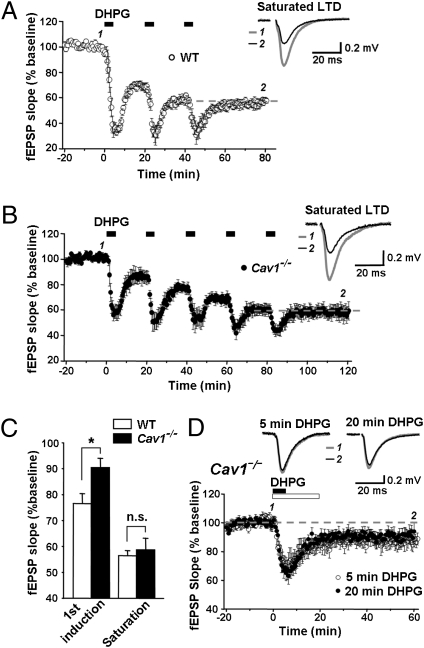Fig. 2.
The saturated level of mGluR-LTD does not differ in WT and Cav1−/− mice. fEPSPs in CA1 were evoked by stimulation of Schaffer collaterals. Insets show representative fEPSPs (average of three to five traces) at indicated times (baseline, thick gray traces; post treatment, thin black traces). (A–C) mGluR-LTD in Cav1−/− mice was saturated by four applications of DHPG (B), whereas two applications were sufficient to saturate LTD in WT (A). Saturated levels were comparable in both. (C) Summary graph of the magnitude of LTD after one application of DHPG and at saturation. The magnitude of LTD induced by one application of DHPG is significantly less in Cav1−/− than in WT mice (n = 10, P < 0.01 WT vs. Cav1−/−), whereas LTD at saturation is not significantly different (Cav1−/−, n = 5; WT, n = 6; P > 0.05). (D) Prolonged stimulation with DHPG did not enhance LTD in Cav1−/− mice. LTD was induced by bath-application of RS-DHPG (100 μM) for 5 (filled bar) or 20 min. The fEPSP slope (mean ± SEM) is plotted as the percent of pre-DHPG baseline. DHPG applied for 20 min did not significantly enhance LTD compared with DHPG applied for 5 min (n = 10, P > 0.05). The LTD data for 5-min DHPG application in Cav1−/− mice are the same as in Fig. 1A.

